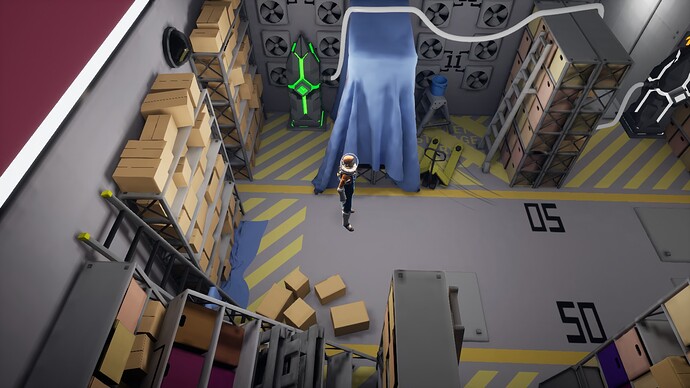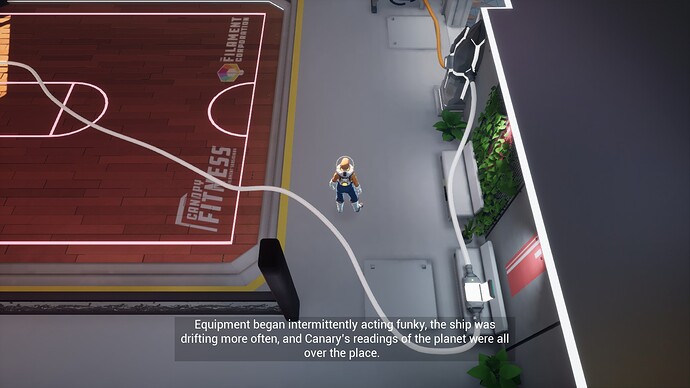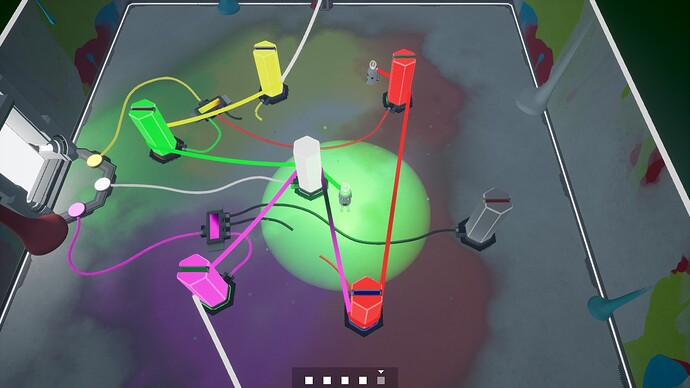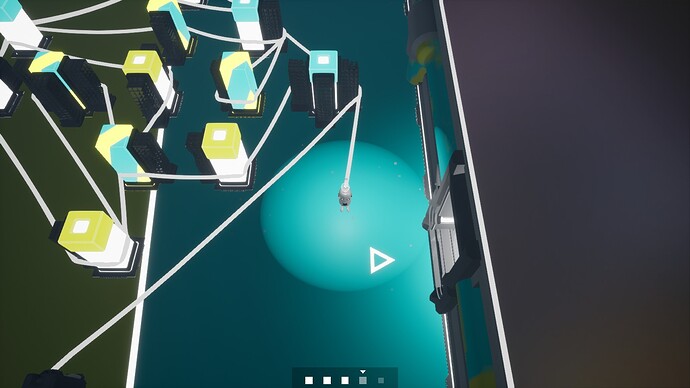Man I haven’t posted in here in about six months, shameful. Still there is a Steam puzzle fest going on and that means it is as good a time as any to write about the puzzle game I’ve been playing for much of the past month…
Filament
Filament is a tricky game to write about as I feel I have to point out that it clearly was inspired in part by The Witness, but doing so I think will lead to misguided expectations both good and bad. It clearly doesn’t have the budget or ambitions of said game, nor the pretensions, but in terms of building various rulesets around a similar basic mechanic and how to lay them out across a larger containing space it clearly took several lessons. Let’s work our way through it and hope for the best.
The game opens with you arriving on a seemingly abandoned research spaceship, with most of the six person crew vanished aside from the pilot who ended up accidentally trapped in the cockpit. The only way to open the door to her and hopefully piece together exactly what happened aboard this ship is to deactivate all the “anchors” laid out all across it, and naturally the only way to do that is solve a few hundred puzzles.
The basic puzzle mechanic is you controlling a robot dragging a wire behind it so that the wire touches all of the pillars laid out in a given digital room, which causes the door to open. The wire cannot cross over itself and can seemingly be of infinite length so the challenge is basically picking the right route around the pillars to make sure that this isn’t an issue while also leaving a path open to the door (also the wire must stay in contact with the pillars for them to stay active). Once you sort out the initial set of puzzles that consist only of this you gain access to the vast majority of the ship’s three floors with only the bridge and a few select rooms locked away.
Each area of the ship has their own unique rules variant and you are free to tackle these in any order, and you only need to complete a certain percent of them to unlock the bridge/final set of puzzles (like in The Witness). These variants can involve only touching certain pillars and avoiding others, certain pillars having to be touched multiple times, multiple wires, color-coded pillars, following vague visual instructions, dealing with floor panels or "gates, there’s a bunch of them. Each anchor generally contains five puzzles that must be completed in order, completing one anchor activates the next one in the area but as noted you can go try puzzles elsewhere on the ship if you feel stuck or want to do something else for a bit.
While wrapping a wire around stuff in a specific pattern sounds like it could make for a kinda uninteresting repetitive experience the truth is that there are some legitimately well crafted puzzles in this thing, with the devs having a very firm grasp of the rules in play and all sorts of tiny quirks within them. With each new set they give you a couple gimme puzzles to make sure you grasp the new rules and then go to work putting you in situations where you have to both internalize them while making sure to pick up on the often small details in the layout that point to the only way things can possibly work out (although with effort one can come up with some elaborate unintended solutions). By keeping each rule set limited to only fifteen puzzles max (really a dozen or so once you get past the teaching ones) it keeps them limited to only the better ideas they came up with and mixes things up fairly frequently.
In addition when you solve a set of puzzles the trapped crew member generally comes on over the intercom to tell you something about themselves or what happened here, and you generally also get a card with a pattern drawn across a 4x4 grid that you can then enter into one of the computers around the ship to unlock a week’s worth of a crew member’s archived text messages. This is a fairly story-heavy experience for a puzzle game but surprisingly it is generally of fairly solid quality with a lot of the credit for that going to whoever voices the trapped pilot as as the sole voiced role she puts in a strong performance.
The thing is as you wander around the space ship between solving puzzles if you pay attention you start to notice… things. One in particular is fairly blatant in a “you need to see this” kind of way basically to prime you to keep your eyes open as separate from the actual puzzles there are some separate puzzle-esque things and details hiding in plain site across this almost hub space (like in The Witness) that are far from necessary but will reward those who interact with them with some additional details about the world and people within it. It’s also pretty neat in its own right!
Eventually you solve enough puzzles to get the door to the bridge open which is right outside the cockpit, at which point you are greeted with the final set of puzzles that start to mix & match various rules in order to truly test how well you understand them as they combine in some maddening ways (like in… you know) in addition to some truly out there “one-off” ideas. There was one set I had to walk away from as I just couldn’t wrap my head around what they were asking for, but otherwise they were a tough test but not an unmanageable one.
It took me about 34 hours spread out over a month to finally solve the puzzle that opened the cockpit door, which is a long time for this type of puzzle game; at no point did it feel too long or that my attention was drifting. I sometimes got stuck for a day on something, having to walk away and go “how can this even work?” before getting an idea that generally at least lead me in the right direction. I’m not sure it’d be my favorite puzzle game of the last few years but it’d definitely be near the top.










